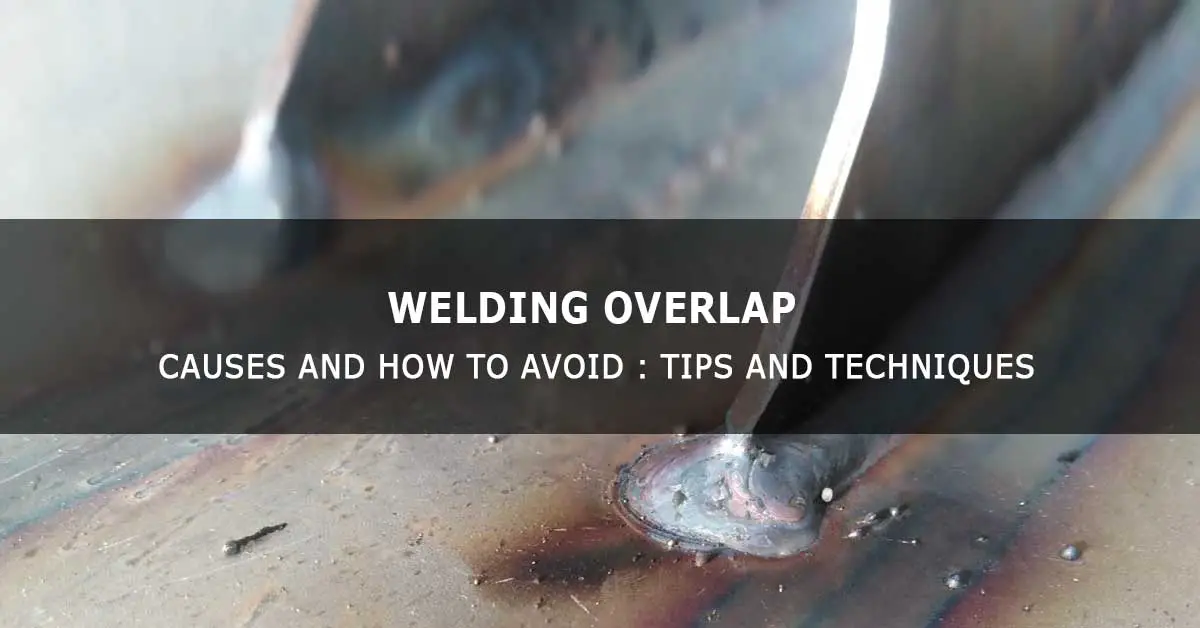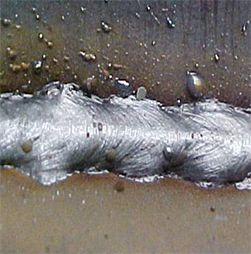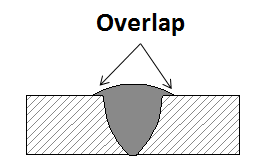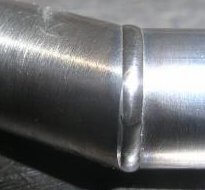A weld joint is made when the base metals and filler material melt and fuse. Additional filler metal is occasionally applied to the weld area and does not adequately combine with the base material, enabling it to flow outside the weld zone. Welding overlap is the term for this and is considered as a weld defect.
An overflowing swimming pool is a suitable comparison. When a pool’s capacity is exceeded by excess water, the excess water flows from the pool. The additional filler weld material used in welding overlap expands around the hole.
Causes of Welding Overlap
The weld pool overflows onto the weld base metal, and this causes an overlap in the welding joint. When this happens, there is an overlap with a less than 90-degree angle because the molten metal does not fuse with the metal’s foundation. Several factors can lead to overlap. Let’s examine the numerous causes:
Excess Weld Metal
Excess weld metal is among the causes of overlap. Slow welding speeds result in the extra weld metal, which causes edge welds to overlap because of the gravitational pull of the flowing weld material.
Improper Electrode Angle
Overlapping is also increased by using an electrode at an improper angle. Due to the electrode’s extreme porosity, using it at the wrong angle only produces overlap.
The electrode angle impacts the weld penetration and the quantity of filler deposited along either edge of the weld bead. Change the electrode angle to obtain uniform filler material depositing to prevent this.
Large electrodes are another factor that contributes to the prevalence of overlaps. An overlap results from an electrode larger than the metal’s size.
Travel Speed
Overlap is also the result of slow travel. If you go too slowly, the filler will build up in the weld pool, overlapping since the solidification time is constant throughout the welding process.
When you notice a bulge of welded metal, move a little faster. You are likely to have better outcomes. However, keep in mind that moving too quickly might also create another welding defects. The travel speed needs to be balanced to avoid welding overlap.
Dimensions of Electrode
Overlapping is determined by the amount of filler material. The electrode serves as the filler, and the electrode’s size determines how much filler is present. If you notice an overlap, a large electrode may be to blame. Use the correct electrode size, carefully read the manuals or charts, or consult with a skilled welder.
Excessive Use of Current
Welding overlap results from using too high current levels. When welding, excess current usage may cause some overlap. A key element in overlaps is electricity, often known as amperage. If the quantity of welding current is higher than required, it will flow naturally out and set in another site.
Tips for Preventing Overlap Welding
Ensure the welding current is not too high, and the travel speed is relatively slow to prevent welding overlap. Additional preventive measures to prevent overlap include thoroughly cleaning the base material, welding at the correct angle, choosing the right size electrode, etc. Here are some best tips for preventing overlap welding:
Use Small Electrodes
Incorrect welding electrode selection causes many welding defects, including overlap. To avoid overlapping welding, we recommended utilizing small size welding electrodes. As a result of employing less welding at each site, small electrodes shorten the distance. Therefore, extra materials and overlaps are much less likely when using small electrodes.
Base Metal Cleaning
Clean the base metal thoroughly to ensure a good weld. Clean the metal to eliminate any impurities as this may hinder welding, produce resistance, cause defects in welding such as overlap, or even result in a weld spill.
You should clean the metal before welding it if it has corrosion, paint, or dust. Cleaning the base weld metal surface can be done in several ways. Large impurities can be removed quickly and efficiently with angle grinders. Sandpaper can be used to remove rust and paint. The primary purpose of sandblasting is for more difficult cleaning.
Enhance Your Skills
Inexperience or using a method incorrectly suited to the task might lead to welding flaws, such as weld overlap. Remember that the kind of metal used and the equipment for welding (TIG, MIG, or Stick welding) the welder uses considerably impact the welding process. It would be best to have several different sorts of preparation to produce a high-quality weld without any overlap or welding flaws. You will also require skills and unique supplies, like shielding gas, that you must utilize correctly.
Everyone needs to practice welding to become proficient at it. For instance, while welding slowly, the weld material overlaps. To correct this, all you have to do is consider the welding speed. Practice is necessary for this. Additionally, how you pair your materials is important. Depending on the welding technique, you will require adequate planning and a great choice of materials. You may examine the guides/charts or consult an experienced welder.
Proper Travel Angle
You should select the travel angles based on the type of weld you are attempting to complete. If you quickly decide and use an incorrect angle, welding will have a noticeable overlap. Based on your weld, you must choose either to use a forehand or a backhand.
Manipulate the Electrode Correctly
Another of the things you must learn by yourself is this. Every welder manipulates differently. As a result, every manipulator has a different style. Finding the approach that is most comfortable for you requires practice to prevent making avoidable welding mistakes. You should study pros’ correct welding techniques and adapt them to create your style. Additionally, you must carefully select the appropriate electrode manipulation methods and choose the right electrode angle before welding.
Moderate Bevel Angle
The most important point to remember is that you must maintain the proper bevel angle. Most of the time, when a beveling pipe (37.5 degrees) angle is best. However, this is different in the case of the structure application. To retain that bevel angle, examine what is required for the purpose.
Conclusion
Common mistakes cause welding overlap. But it is a preventable welding defect, and you can produce perfect welds with a little caution, experience, basic welding knowledge, and following the correct welding process.
Ensure that you are familiar with the applicable welding methods and processes. When welding, accuracy must be used as much as possible. You can avoid welding defects such as welding overlaps using the proper welding technique and procedure. And if this defect does occur, a remedy to welding overlaps is repairing it by carefully grinding the excess metals off to protect the joint.
Reference
- ElectronicsHub Website.
- ESAB Welding Handbook.








